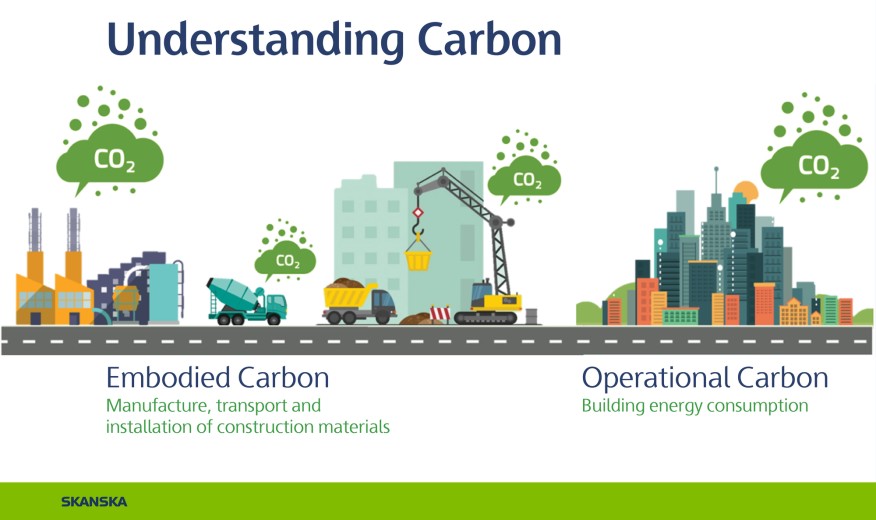



Managing carbon and other GHG emissions is an effective way to help address climate change.
Addressing climate change is crucial to creating a healthy and sustainable planet. Managing carbon and other greenhouse gas (GHG) emissions is an effective way to help address climate change.
According to the United Nations Environment Programme (UNEP), buildings make up 39 percent of global energy-related emissions. As a significant contributor to GHG emissions, the building and construction sector is a key focus area for overall carbon mitigation strategies. Chemical and product manufacturers are innovating products and processes to reduce embodied carbon in the built environment and beyond. These may include reformulations that help lower the embodied carbon profile of concrete used in buildings, or using carbon capture and sequestration processes to turn CO2 into sustainable foams used in mattresses and flooring.
For architects and designers, understanding the carbon footprint of materials can help reduce embodied carbon in the built environment and can greatly contribute to the reduction of global GHG emissions.
In the building and construction sector, carbon tracking may be broken down into embodied carbon and operational carbon. While operational carbon refers to the amount of energy consumed by the building, embodied carbon is the total carbon footprint of a material, from manufacture to end-of-life.

(Image credit: Architect Magazine)
ACC and several member companies are working with architects, designers, engineers, product manufacturers and policy makers to develop frameworks and tools to help accurately and consistently calculate the embodied carbon of buildings and their constituent products through venues such as the Carbon Leadership Forum.